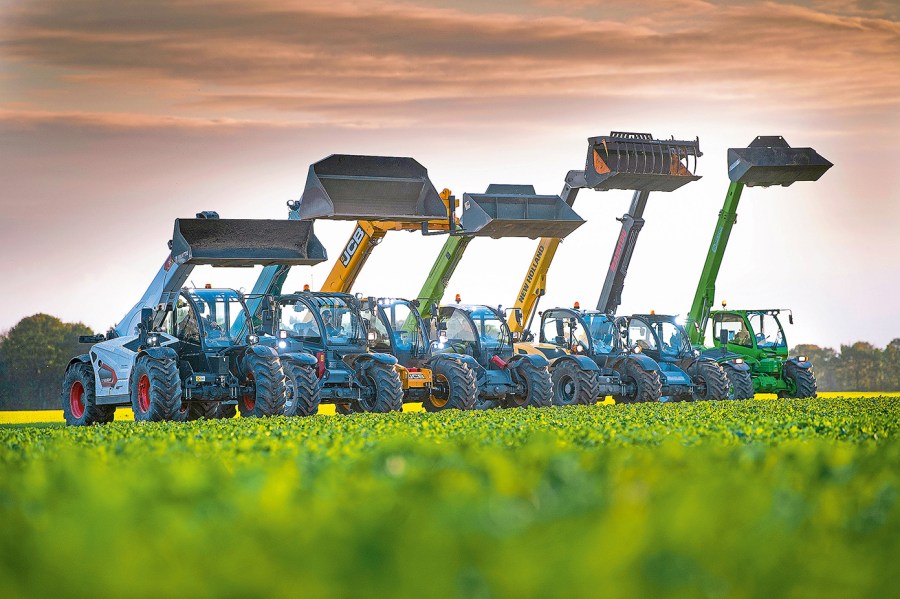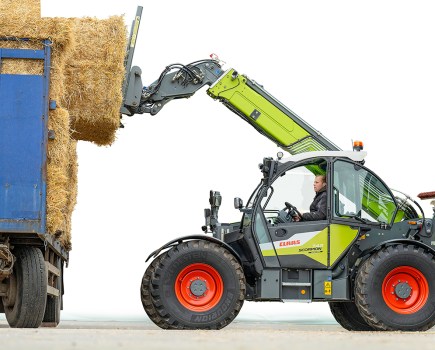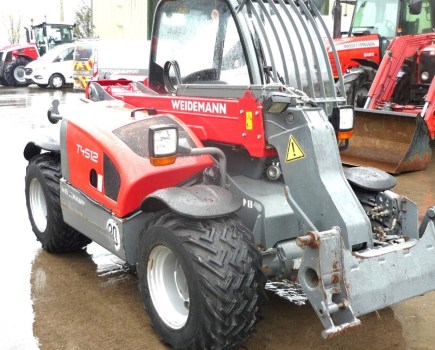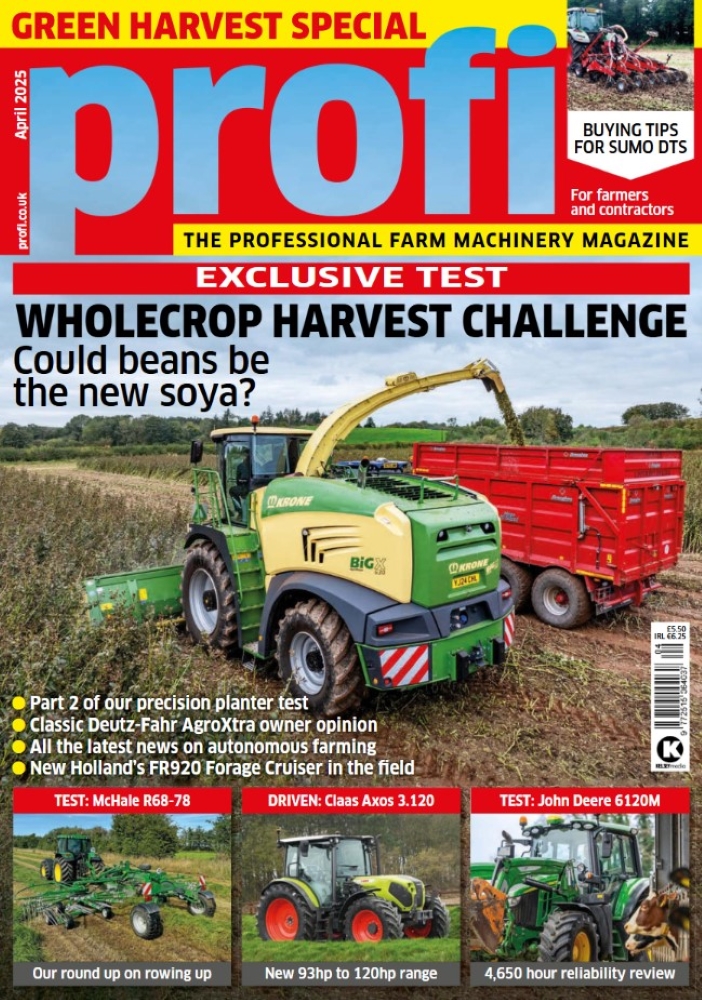Not only did we test the lift of the 7.0m, 4.0t machines (profi 12/22), but the test team also put the seven telehandler to work on farm … to assess what they’re like to live with, day in, day out. Read on to discover how they compare.
When buying a telehandler, it is usually not that extra centimetre of lift or deci-newton of lifting force that breaks or makes a deal. In day-to-day use, operating and driving comfort are much more important to the user. Here it’s often the little things that prove to be a joy or simply annoying. One such detail is the step up to the cab. After all, how many times in a day do you hop on and off the machine?
The recess in the cab floor on the Kramer and Manitou handlers is a real boon, making clambering in and out that bit more comfortable. Other examples are the seat and steering wheel adjustment, ergonomics of the joystick and other cab controls, service and maintenance, the space and position of the pedals, ease of attaching a bucket … and much, much more.
Scores from 1 to 5
That’s why our press colleagues at TraktorTech from Denmark, Koneviesta from Finland and Trekker from the Netherlands carefully studied these facets during their comparison test. For this, the seven handlers from Bobcat, Claas, JCB, Kramer, Manitou, Merlo and New Holland were used to muck out buildings, transport and load bales as well as dump into a tipper trailer.
During these various tasks, each test driver rated a selection of criteria from 1 (poor) to 5 (good). The average test scores were then summarised into six categories; cab, getting in/out, use, all-round visibility, handling and daily maintenance. You can see the results in the table on the left.
These test ratings were then included in the overall scores for each telehandler in Part 1 of the test in last month’s issue.
For more up-to-date farming news and reviews click here and subscribe now to profi for just £3.99 an issue.






